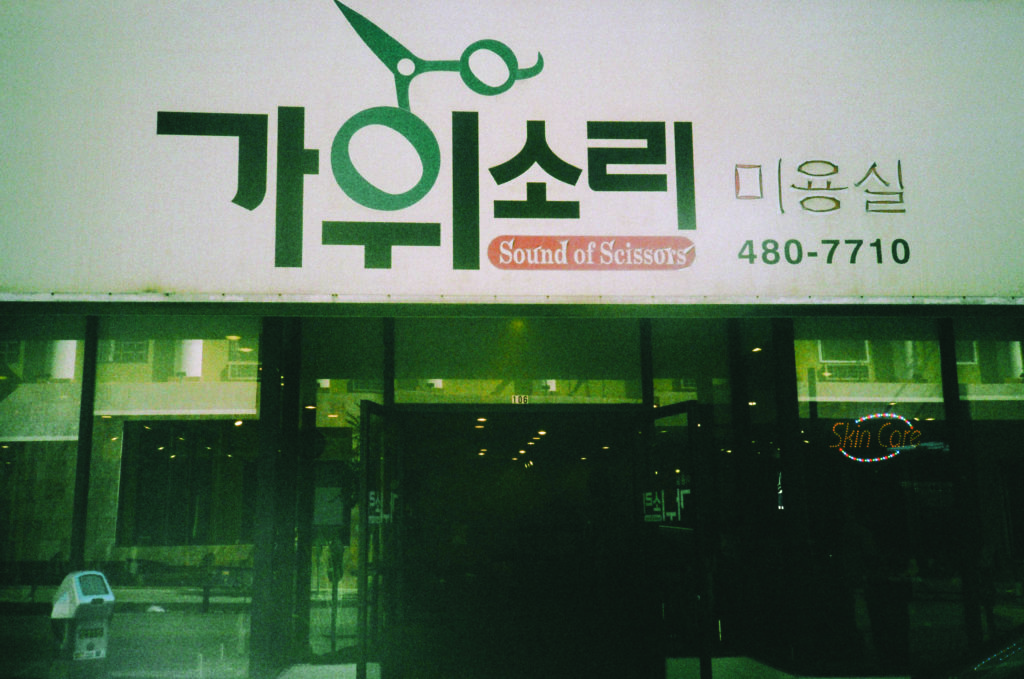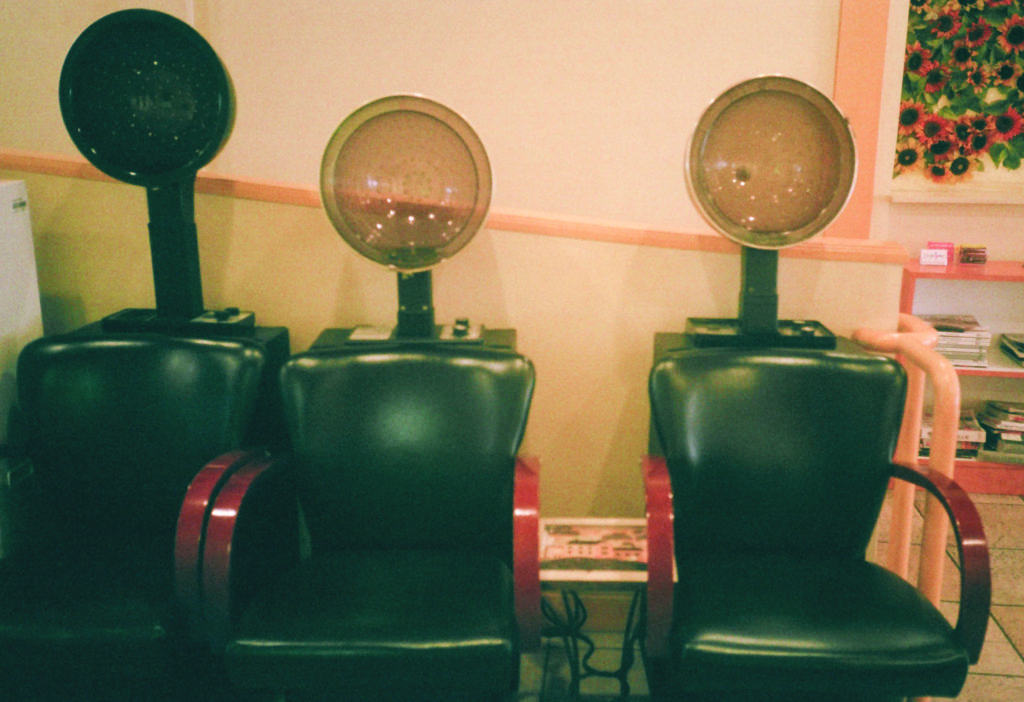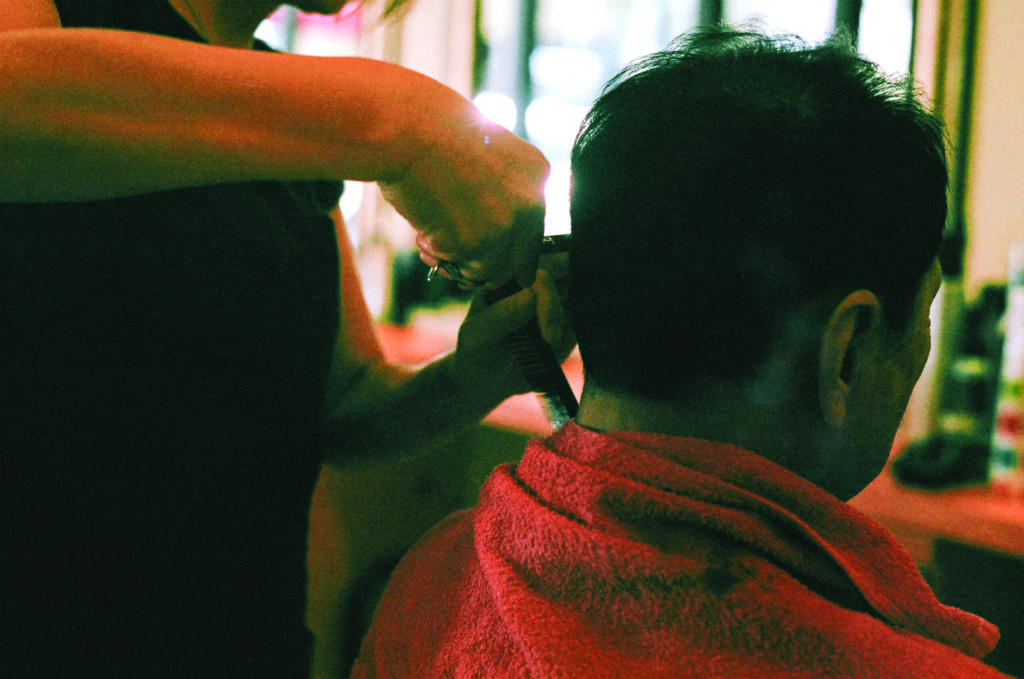Jennifer Song-suk Choe has been cutting hair in Koreatown at Sound of Scissors for 18 years. She does not have an Instagram for her professional work. She does not take pictures of her clients’ finished hair at the end of their appointments. As soon as they sit down, she gets to work with her tools at the ready. Most of the time, her customers are out within 30 minutes.
Choe’s personal practice is fitting of how Sound of Scissors runs its business. It isn’t at the top of Google search results for “hair salons in Koreatown.” It doesn’t run promoted ads in social feeds, nor does it place listings in local papers. In fact, it hasn’t run advertisements online or on air for several years.
“We don’t really need to right now,” says Choe. She would know what is right for the business, which has been at its corner under its current name on Wilshire Boulevard and St. Andrews Place for over two decades. Having been at its current location for this long, the salon finds relevance because of its history in the community.
Prior to operating as Sound of Scissors, the salon was known as the Ivy. The name changed when its former owner passed the business on to Sara Kim, who had been renting her workstation at the time. Today, Kim runs Sound of Scissors in partnership with Choe and Anne Ko, both of whom joined Kim in Koreatown after working at several other hair salons outside of the neighborhood. They wanted to deliver on the promise of service to a community that made them comfortable about their cultural backgrounds. Since 1993, it’s been just the three of them who run the chairs. Or rather, it had been the trio in their rhythm for so long that none of them are exactly sure that 1993 is when they began. “But definitely at least 25 years,” says Choe.
Nowadays, a lot of Sound of Scissors’ new clients come from people who find them simply by walking down the block. It’s hard to miss. Its green and black signage wraps around a white building on Wilshire and St. Andrews Place, yet easily overlooked by somebody who is brand new to Koreatown.
In Koreatown’s current iteration, new residents are on foot exploring their parameters and anchoring themselves to their essentials. Here they mingle with families of Asian descent who moved here to immerse themselves in something familiar. Local merchants are steadily accommodating transplants who find comfort in recognizable brands. It’s evident in the Romanization of Asian business names and English translations to their offerings on menus and displays. The brute side-effect to Los Angeles’ growing pains: a culturally rich neighborhood is being stripped of its color.
Korean Angelenos rally through word of mouth. Grapevines are thick like rope in these communities. In coffee shops and markets, families and friends check in on one another. Secrets of the neighborhood are exchanged. I wouldn’t have found myself at Sound of Scissors if it weren’t for my mother, who started going under the tightly-sealed recommendation of a Sunday service friend. Then my mother started to take my aunt with her, and soon my aunt’s husband and neighbor followed.
“We do well because of families and family friends. Women bring in their husbands and children, or they bring their friends from work or church,” explains Choe.

A typical Korean hair appointment starts with a thorough hair rinse underneath a shampoo hose that has just one mode of pressure; it’s not the real deal if water isn’t splashing your neck and shoulders as you recline in the chair. Your hair then gets wrapped in a towel blanched from bleach.
Meanwhile, your head tingles from the minty leave-in conditioner that was furiously lathered into the scalp with latex gloves, speckled with dye. If you’re coloring your hair in a Korean salon, you’re sitting at the work station with a thick, slick coating of vaseline lining the frame of your face. Meanwhile, your stylist is furiously mixing dyes at her station in front of you. The pungent ammonia permeates and reminds that this is no time and space for smoke and mirrors. Haircare in a Korean salon is process-driven.
Choe takes pride in her “gisul.” The word translates to “skills” and according to her, “It’s what people come to Korean salons for.” Skills are developed with respect to people’s hustle outside of their appointments; surviving in this metropolis means there is constant money to secure and mouths to feed.
Clients have rearranged their day to squeeze in appointments. The Korean salon thus belongs in a city, and the Korean stylist thrives where their customers appreciate sensibility. Gisul means getting shit done.
Entering Sound of Scissors is like putting on noise-cancelling headphones. It’s occasionally punctuated by the hums of hair dryers or the faint fuzz of an adult contemporary radio station cutting in and out from a dated portable system. The only other sounds that steadily cut through the air are the surgical snips of sharp edges through wet hair; Sound of Scissors is an apt name. For Korean communities, these salons are trusted harbors for respectful merchant-client arrangements: for your time and money, you get somebody’s practical expertise.
“How is your aunt?” Choe asks me at the start of my recent visit. “She came for a trim the other day.” Formalities melted years ago; it’s not uncommon to find Korean families confiding in their stylists. Choe is a part of my own family’s lore.
My usual cut is a thinned layered look, which a Caucasian hair salon once told me is difficult because it is not “in style.” I’d tried other places in hopes of having easier conversations about my hair (I’m not fluent in Korean), but it felt as if the arrangements were mismanaged. I hadn’t asked for my hair to be treated with style; I asked for layers because my thick, coarse hair would hang heavy on my head otherwise.
If there is anything additive to the service you get from a Koreatown salon, it’s the comfort of not adapting to outsiders’ recommendations. The reliable presence of these older fixtures have made us feel better in spite of changes. On the same side of Sound of Scissors lie a massage therapist, a bank and a restaurant that specializes in ox bone soup (seolleongtang); my earliest memories are all attached to their service to my family.
I worry about foot traffic at the Wilshire and Western intersection. Google returns about 20 search results for new hair salons up and down these blocks. Being offline right now feels counterintuitive for the sake of business, but Choe trusts the process.
“We’ve been able to change with the changes,” she says. “It’s similar to how we didn’t have iPhones, but now we all have iPhones. We will adapt.”

